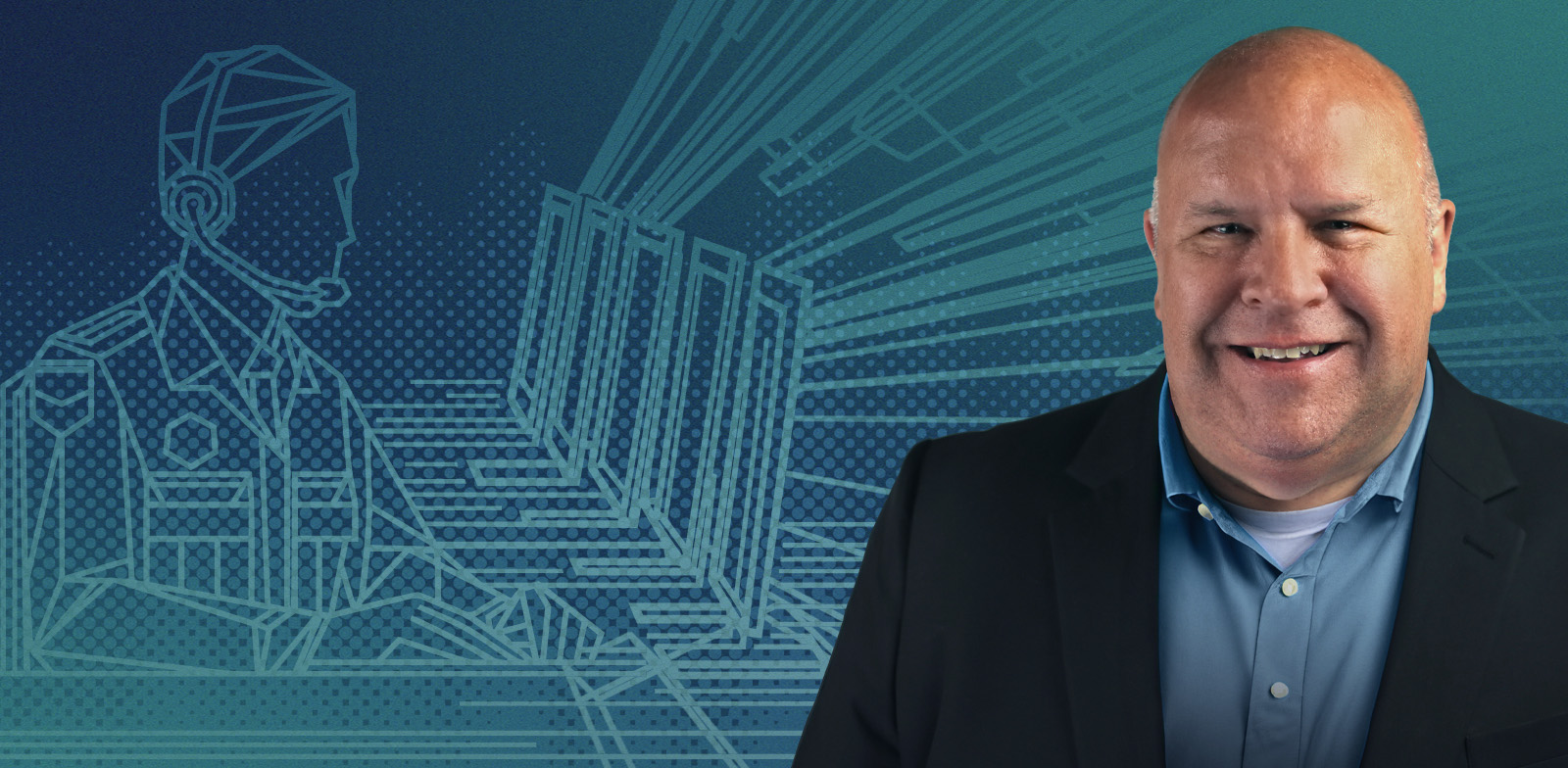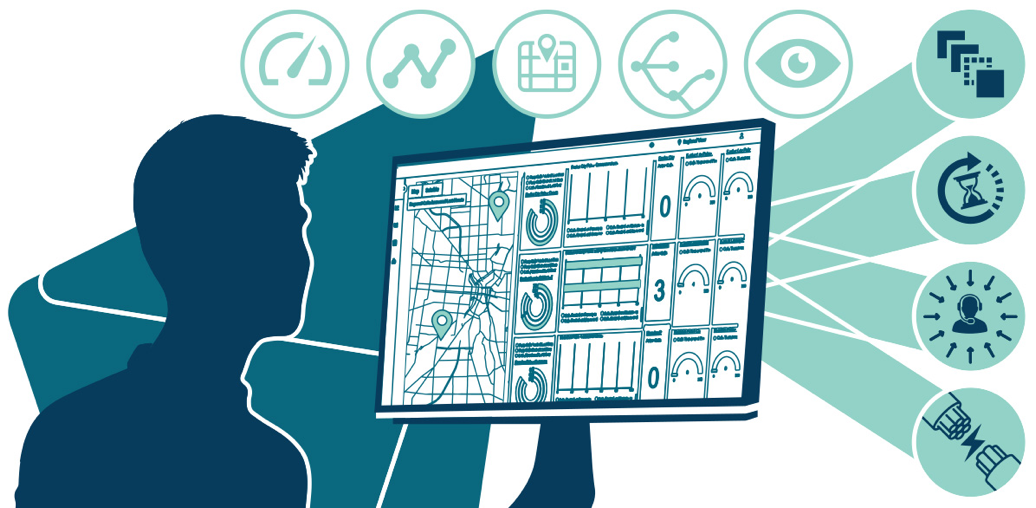FAQs: A Quick Guide to FCC 24-78 and NG911 Compliance for OSPs
FCC compliance can feel like threading a legal needle—especially with new Next Generation 911 (NG911) requirements now in effect. As of March 25,...
Having spent many years as a technologist in the telecommunications industry, I was hoping to see more enthusiasm for the next generation of 911, or NG911. I get that the upgrade to IP (Internet Protocol) systems from outdated analog communications infrastructure might feel like playing catchup. We want to be able to utilize all the digital media that we have become accustomed to in our daily lives for 911 as well. Or maybe we feel forced into using IP now because the communications service providers are discontinuing their use of copper line and TDM (time-division multiplexing) networks. And while the benefits of digital systems and interoperability are well founded, some of the NG911 upgrades so far may not appear to have really impacted the day-to-day operations of the PSAP.
Transformational change is always hard, but it can be particularly hard when you feel like it’s from something happening to you, not by you. That is to say, when something like a technology upgrade feels forced upon you, while you struggle daily to meet all the safety needs of your community. The water-cooler discussions quickly focus more on hardware and software than on how it all translates into better serving the public. It’s hard to take the time out to envision exactly what’s possible tomorrow when such a technology platform is fully implemented. The default becomes choosing to "not not" implement something like NG911 as much as embracing the next generation with open arms and required investments.
In addition to some of the concerns shared directly with me by PSAP directors, I find that the most troubling bellwether centers around the funding of NG911. If you’ve followed the news lately regarding the debates in Washington about whether and how much to fund NG911 expenses across the United States, you don’t finish reading those stories with a warm and fuzzy feeling inside. I’ve spent many years working with national infrastructure upgrades, and such endeavors require huge and sustained investments. Mobile operators will spend hundreds of billions of dollars on 5G by the time this new generation of communication is fully implemented. Once committed, there’s little room for such tentativeness.
Perhaps that’s where the trouble lies, in throwing around a term like next generation without pausing enough to understand what that really means. A dictionary definition would read something like "a new product or technology that is designed to replace an existing technology." Like 5G replacing 4G mobile services or EVs (electric vehicles) replacing combustion engines automobiles. But we know from those examples that the concept of replace is somewhat misleading. We’re not all going to send the cars in our garage off to the junkyard until the alternative technology proves itself sufficient and scalable. In the world of telecommunications, we have honed a rational, managed evolution process from one generation of network access to the next; service providers continue to use 4G voice services until 5G Voice over New Radio is fully functional and reliable.
In emergency communications, we, too, have phased in the NG911 migration from TDM to IP. Sitting in between the legacy planning box and the nationwide fully implemented box is a transition phase. This is where a lot of the network build-out, troubleshooting, and budget expenditures will take place. It’s also where we will find many of the “hard parts” of change taking place. And it’s the phase where an industry can either muddle through or forge true transformation. In my experience, the difference depends on the vision, or the Why, of what the next generation means to the public and public safety.
Infrastructure Transition
To a network engineer, NG911 is just an Ethernet circuit with an MPLS traffic-engineered service over the top of it, connected to a core routing solution called the ESInet, via an interoperable i3 architecture standard. I’ll leave it to my marketing team to parenthetically spell out all the networking acronyms that drive them crazy. [Ethernet protocol enables devices to communicate across a local or wide area network. Multiprotocol Label Switching, or MPLS, is a networking technology that routes traffic using the shortest path based on "labels," rather than network addresses, over wide area networks. ESInet is a dedicated, secure Emergency Services IP network.] The move to IP should result in greater bandwidth, accessibility, and scalability, along with easier maintenance/updating and management through cloud delivery.
To the user, emergency communications look very similar via IP, but it’s not quite the same. If you’ve traveled internationally, you still do all the same things during your day, it’s just the way things work is rather different. While we didn’t need a user manual to migrate to 5G mobile, we did need a new phone, and we now connect through a much denser, small-cell network that utilizes advanced antennas and directional transmission technologies. It’s the same, but different. And the physical transport network transition for NG911, supporting next-generation core services (including ESInet location and routing), as with other core network builds, will likely be relatively complicated, time consuming, and capital intensive.
To start, the transition to NG911 will be gated to some extent by its legacy starting points. If a PSAP doesn’t have an available duct or fiber drop, or doesn’t possess an existing Ethernet access point, they are likely facing a bigger project than they signed up for (or they will have to spin up a bunch of access workarounds). They will have to manage their way through all the redundancy and routing diversity rules. PSAPs will have to fund interoperability testing regimens, cybersecurity enhancements, and telecommunicator training on new IP-enabled technologies (multimedia, device-based supplemental data, etc.).
If funding comes in fits and starts, be it national or local, it risks extending the transition period and makes project management that much more complicated. The original proposals for federal intervention cite a disparity across the highly fragmented 911 system: different approaches to meet the standards, from differing starting points and funding capacities. The individuality across municipal or statewide NG911 journeys risks the entire effort not reaching a "tipping point" in the NG911 transition, such that the progress and momentum are sufficient to ensure a full implementation of the nationwide vision.
The driving forces towards such a transitional "critical mass" also vary across organizational lines. The FCC (Federal Communications Commission) regulates the way in which communications service providers must construct a nationwide emergency safety network but holds no authority over how emergency communication centers (ECCs) might consume it. The standards bodies and industry organizations that act on behalf of ECCs/PSAPs (e.g., NENA, APCO) do not necessarily represent the independent software/hardware providers in the way that 3GPP (3rd Generation Partnership Project) is more vendor-inclusive to ensure interoperability across mobile communications.
The result of disparate aspirations acting toward a common good—and there is little doubt that all the stakeholders of NG911 are committed to improving public safety—will likely result not in barriers to success as much as prolonged timelines and consternations. Slow and steady is not such as bad thing if it means that no one is left behind or excluded from the process.
Intentional Coexistence
Some of those voices will be expressing their concerns that the public they serve might be negatively affected by or during the transition. Our 911 system today works. It just does. It’s clearly understood and highly reliable. If someone calls for help, their call will be answered. So, it would be natural, or even fiduciary, for a PSAP to want to go slow and steady and not want to let go of what works until the new thing is fully implemented and tested.
Those concerns often reflect our comfort zones when it comes to public expectations and how hard it can be to communicate change with the masses (such as with the rollout of text-to-911). I lived in a small town where most people know the direct dial number to the local police station. Many communities still use 911 for emergencies and their admin lines for non-urgent incidents. That 10-digit phone number has probably been the same for decades. So, what will they do with the T1 copper line to the PSAP when they move to NG911? Will there still be that warm blanket of reliability if that direct dial was a VoIP (Voice over Internet Protocol) connection?
In many technology transformations that I have observed, more than one generation exists in the same space for a strategic period of time. It preserves continuity. But such "intentional coexistence" delays transformation. Some portion of budgets and resources that would have been spent all-in on NG911 will be held to maintain legacy infrastructure.
Intentional coexistence delays transformation.
How long will this period of intentional coexistence persist? That’s hard to say. In telecom, the mobile access networks (2G, 3G, 4G) fully replace themselves over several years or so, but the transport network technologies (e.g., Wavelength Division Multiplexing) take many, many more years to disappear from the architecture diagrams. I have observed that the rate of transformation progress can be influenced by the stability and general acceptance of the defining standards.
Reimagining RFAs
The standards-setting and game is as much about fortune-telling as technology evolution. As with corporate R&D and innovation, you’ve got to put on a futurist's hat, trying to figure out how people and societies will want to use a product or service years or, in the case of next-gen, decades from now. I read an amazing story years ago where Intel decided to hire an anthropologist, Dr. Genevieve Bell, to "study how consumers interact with electronics and develop new technology experiences for them." Dr. Bell assembled a team that would approach minivans at rest stops and ask the drivers to empty out the contents of their vehicles to better understand how microelectronics play in our daily lives. Intel Labs was tasked to continuously innovate the next generations of chips for electronics products their manufacturing customers hadn’t begun to envision.
So, as we work to implement the platform for NG911, what will the next generation of 911 actually look like? What “applications” are we preparing for with this new, digital communications network?
We are very fortunate in the U.S. that we’ve been able to integrate 911 into our culture. We all grew up learning how to call 911 for help in an emergency. It’s promoted on the side of every police vehicle. We seamlessly migrated the 911 experience from wireline to mobile. We added texting to 911. And now we have all seen Apple introduce Emergency SOS. But wait—if you search for "911" on Apple’s SOS webpage, you won’t find it. Interesting, no? Could a trend be emerging?
For fun, I’ve been following the standards development for 6G. (Well, for work as well, actually, as I have an innovation team that’s been pondering the technologies for the PSAP of 2030, where 6G will start to lean in.) Some of the 6G working groups are looking at truly ubiquitous connectivity, where every device and surface around us, tabletops, picture frames, you name it, will have cellular capability. (Picture Minority Report, or your favorite Sci-Fi show.) In some of those scenarios, the handset, aka the mobile phone as we know it, may no longer be necessary. Dialing 911 as we know it today may no longer be a thing in the future. That said, when bad things happen, humans need and will demand support from other compassionate humans with the skills and tools necessary to offer the needed assistance, so I’m very bullish on the future of requests for assistance and the supporting first responders of today and well into the foreseeable future.
While I believe that the short code will persist for many years to come—just look at the uptake in the 988 Suicide and Crisis Hotline—other means by which to generate RFA (Requests for Assistance) will start to coexist as well. We’re already starting to see it with security alarms and sensors, and we’re planning on telematics generated RFAs from connected vehicles to enter into the mix soon. With the rise of the Internet of Things (IoT), we may start to see more preemptive RFAs, such as a smartwatch that can issue an RFA after an embedded accelerometer detects a serious fall.
Perhaps the next generation of 911 includes transitioning away from predominantly "victim initiated" RFAs. Technology, especially with the aid of machine learning and artificial intelligence, may advance to the point where devices know we need help before we even recognize that we’re in danger. My IP-enabled fuse box notifies my smart home management system of an electrical surge in my oven, which it pairs with my connected thermostat alert for a rapidly rising temperature in my kitchen, which notifies the fire department even before a smoke detector is activated. Who knows, right?
But isn’t that the point of something as transformative as NG911? We don’t know exactly. So, it’s a bit hard to take that leap of faith needed for such a big undertaking. But if instead of us just “installing Ethernet circuits with an MPLS traffic-engineered service,” we’re changing the way the public might engage with PSAPs and first responders. What if, instead of the burden always placed on some poor soul to try to convey incident information during the worst moment in their life, a telecommunicator is able to become the RFA initiator on their behalf? "Hello, Mrs. Jones, this is your local emergency communications center. We’ve received an alert that your mother may be in cardiac distress. She is not responding to our outreach. We’ve initiated her vehicle urgent-care app, which observed labored breathing, so we have already dispatched an ambulance to her current location at the corner of South Street and Market. Please notify her doctor and standby for further instructions."
IP: Short Acronym, Long Range
In the meantime, NG911, as a new, IP-based system, opens the world of emergency communications to all the innovation and imagination of the Internet of Things. It would be very hard to take full advantage of IoT without IP. The Internet of Things can offer PSAPs and first responders an infinite number of eyes and ears to help them as they try to render aid. As much as they want, or don’t.
NG911 via IP allows us to become intelligent about how we ingress such supplemental information. We should have the ability to draw an imaginary boundary, a geofence, around an emergency incident and engage all the IP-connected devices in that area (with permission), capturing and analyzing all their data and visuals. We could virtually recreate the incident scene right at the telecommunicator’s station. We are counting on NG911, ESInet, and IoT to all come together to better serve the public in their time of need.
There are probably thousands of ideas like this out there, waiting for NG911 transition and implementation. They won’t find their way into public safety without NG911 in the way that all those iOS or Android applications wouldn’t have seen the light of day on a 3G Motorola Razr. So why take the leap of faith to NG911 and persevere through the murky transition? Because the "not not" dynamic makes it that much harder for us to continue to do better.

FCC compliance can feel like threading a legal needle—especially with new Next Generation 911 (NG911) requirements now in effect. As of March 25,...

As of Tuesday, March 25, 2025, 911 Authorities could begin to issue Next Generation 911 (NG911) service requests under the FCC's transition order....

911 compliance is a critical aspect of workplace safety that merges legal obligations with moral responsibility. Compliance with Kari’s Law and RAY...

At the end of 2022, the FCC (Federal Communications Commission) laid down the gauntlet on improving 911 reliability by issuing an order [FCC 22-88]...